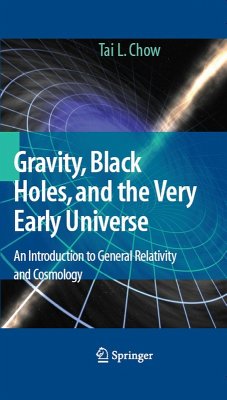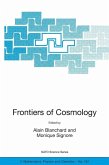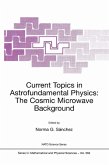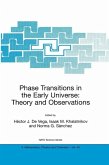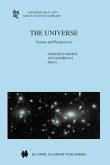In the early 1900s, Albert Einstein formulated two theories that would forever change the landscape of physics: the Special Theory of Relativity and the General Theory of Relativity. By 1925, quantum mechanics had been born out of the dissection of these two theories, and shortly after that, relativistic quantum field theory. We now had in place some important ties between the laws of physics and the types of particle interactions the new physics was uncovering.
Gravity is one of the four types of forces that are found throughout the universe. In fact, although it is a relatively weak force, it operates at huge distances, and so must be accounted for in any cosmological system. Unfortunately, gravity continues to defy our neat categorization of how all the forces in nature work together.
Professor Tai Chow, from the California State University at Stanislaus in Turlock, lays out for us the basic ideas of Einstein, including his law of gravitation, explains the physics behind black holes, and weaves into this an absorbing account an explanation of the structure of the universe and the science of cosmology, including presenting the various models of the Big Bang, the Inflationary Universe, and the Unification of Forces. Travel with him down this engaging path to reach some fascinating conclusions, which raise even more interesting questions for the future of astronomy and physics.
Says Dr. Mark Silverman of Trinity College in Hartford, Connecticut:
"The author ... introduces the mathematical methods essential to understanding and applying general relativity...but leaves to more advanced references derivations that a beginning student would likely find overly long and tedious.... In this way the student can concentrate on learning physics ....A strong point [is] the comprehensive discussion of the physics of black holes. Here again the author has hit just the right level of presentation: sufficientmathematical detail to demonstrate ...the physical attributes of black holes...yet not so much mathematics as to lose track of the physics in an impenetrable forest of equations. An equally strong point is the discussion of the most exciting contemporary issues in astrophysics apart from black holes..."
Gravity is one of the four types of forces that are found throughout the universe. In fact, although it is a relatively weak force, it operates at huge distances, and so must be accounted for in any cosmological system. Unfortunately, gravity continues to defy our neat categorization of how all the forces in nature work together.
Professor Tai Chow, from the California State University at Stanislaus in Turlock, lays out for us the basic ideas of Einstein, including his law of gravitation, explains the physics behind black holes, and weaves into this an absorbing account an explanation of the structure of the universe and the science of cosmology, including presenting the various models of the Big Bang, the Inflationary Universe, and the Unification of Forces. Travel with him down this engaging path to reach some fascinating conclusions, which raise even more interesting questions for the future of astronomy and physics.
Says Dr. Mark Silverman of Trinity College in Hartford, Connecticut:
"The author ... introduces the mathematical methods essential to understanding and applying general relativity...but leaves to more advanced references derivations that a beginning student would likely find overly long and tedious.... In this way the student can concentrate on learning physics ....A strong point [is] the comprehensive discussion of the physics of black holes. Here again the author has hit just the right level of presentation: sufficientmathematical detail to demonstrate ...the physical attributes of black holes...yet not so much mathematics as to lose track of the physics in an impenetrable forest of equations. An equally strong point is the discussion of the most exciting contemporary issues in astrophysics apart from black holes..."
Dieser Download kann aus rechtlichen Gründen nur mit Rechnungsadresse in A, B, BG, CY, CZ, D, DK, EW, E, FIN, F, GR, HR, H, IRL, I, LT, L, LR, M, NL, PL, P, R, S, SLO, SK ausgeliefert werden.
From the reviews: "Chow ... has successfully filled the gap in the literature between introductory texts for lay readers interested in cosmology and advanced works. Chow's book is aimed at undergraduates but is accessible to all readers ... . Chapters can stand alone for quick reference, yet the book's progressive nature makes it a viable course resource for supporting all physics curricula. ... this work will be suitable for all science libraries and collections. Summing Up: Recommended. General readers; lower-division undergraduates through graduate students." (J. H. Murphy, CHOICE, Vol. 45 (8), 2008) "This book has its roots in the lecture notes of Professor Chow, who taught an undergraduate course in relativity and cosmology ... . I was interested by the ideas and the historical aspects developed ... on the inflationary universe and the physics of the very early universe. ... The book may be useful for general information on cosmology and to a physicist already well prepared in general relativity and cosmology to prepare a course on these subjects." (Fernande Grandjean, Belgian Physical Society Magazine, Issue 2, June, 2009)

